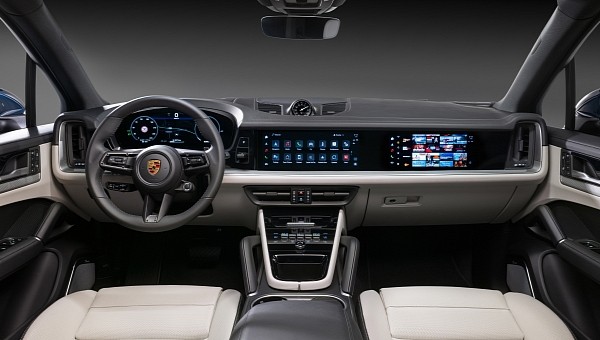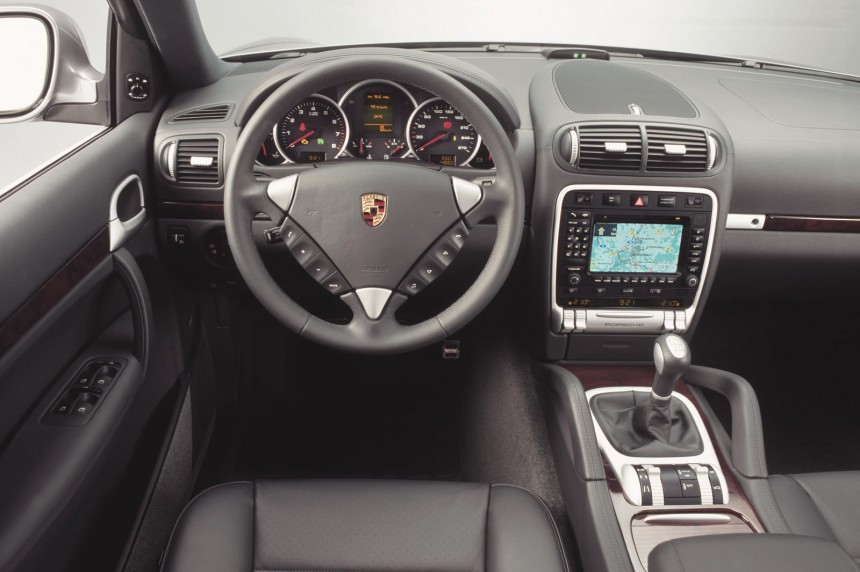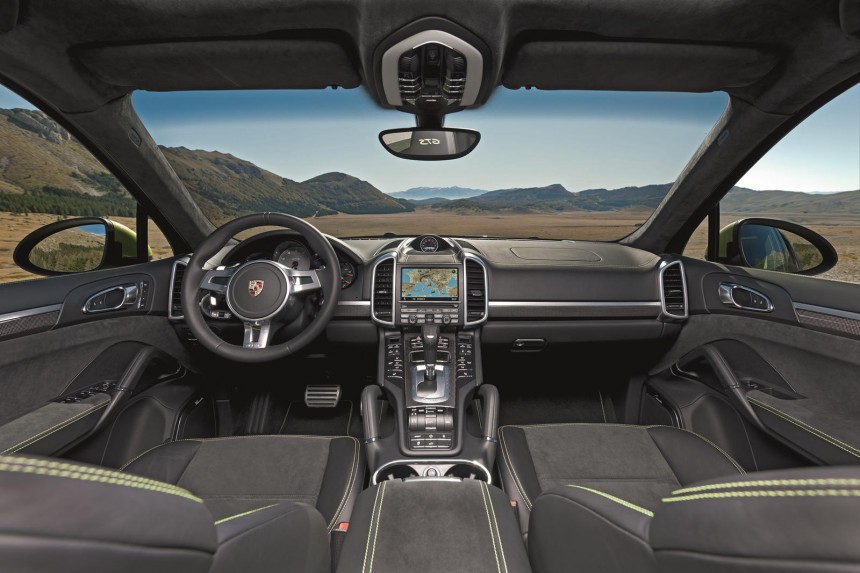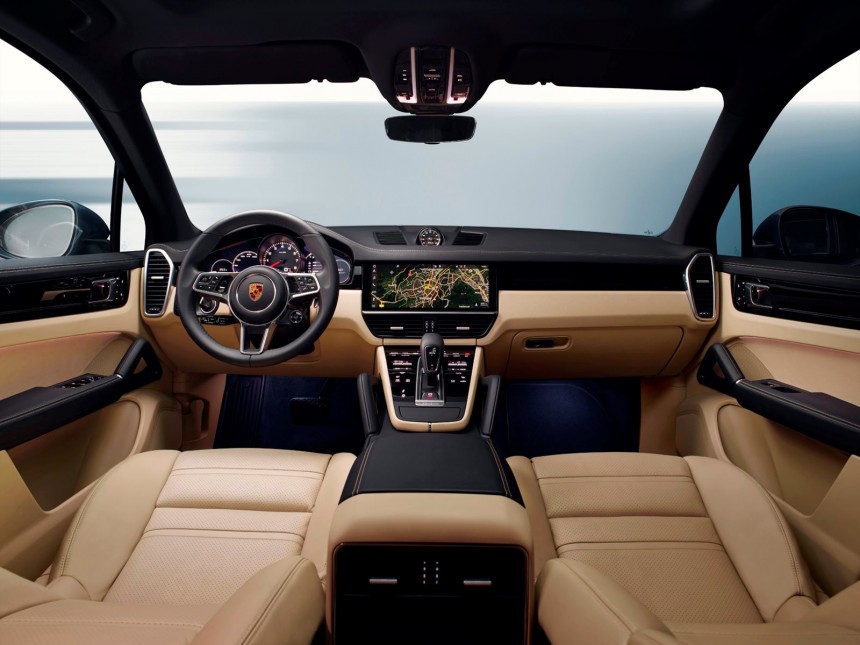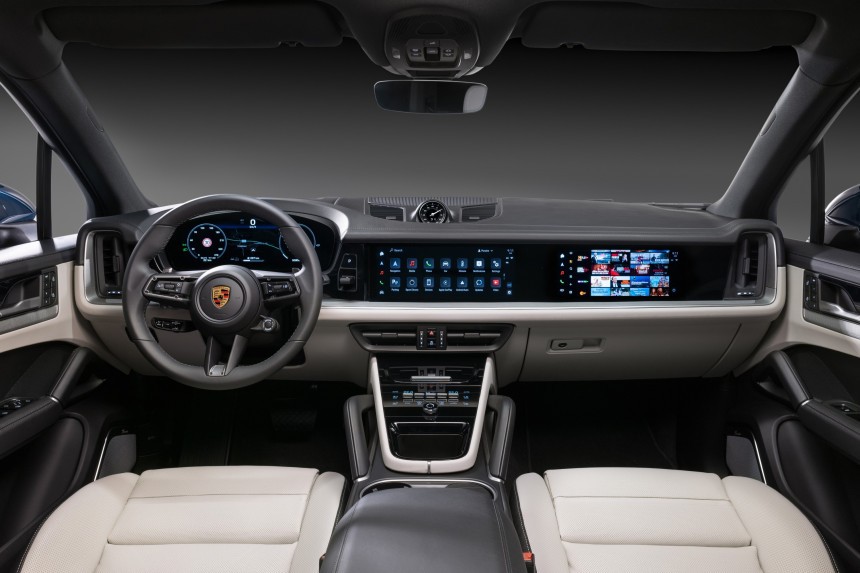Way back in 2003, Porsche was slowly beginning to recover from the trouble-ridden '90s. We may look back at the 993 911 as a high watermark, but until the debut of the 986 Porsche Boxster, the company’s future was in question. With the introduction of that car, as well as the Cayenne in 2003, the brand's future became more secure.
A whole twenty (twenty!) years later, and the Cayenne is a staple of the brand – and arguably its most successful model throughout the years since its introduction. With the latest fourth-generation Cayenne on its way, Porsche has shown off the new model’s revised interior. More on that at the end. For now, it's worth taking a look back at previous generations’ interiors to see how we got where we are today.
With that out of the way, let’s discuss the 955 Cayenne’s now-retro interior. The interior was somewhat of a departure from the norm in Stuttgart at the time. It still had some elements of the 996 and 986 interiors, such as a smattering of shared switchgear. Remember: Porsche was still in pretty tough shape in ’03.
This aside, the interior is significantly more blocky and hard-edged than the 911 or Boxster. The Cayenne’s new 4WD system and its selector dominate the center stack. Supposing you don’t notice the shift lever for the 6-speed manual transmission. The first Cayenne offered one, and the later Cayenne GTS did as well, right up until 2010. These early cars also offered nav, and refreshingly legible physical dials not dissimilar to 911s of the era.
955 Cayennes were otherwise largely devoid of any “Porsche-ness” aft of the front seats. The brand was very clearly hopping on a growing bandwagon at the time, joined by all the other German brands at various points throughout the early 2000s. Seats folded down, dogs and kids could be stuffed in, and luggage space was ample. However, Porsche updated some things for the 2008 facelift, which included a more consistent design, in line with the 911, Cayman, and Boxster at the time. For the first time, the lineup looked consistent from behind the wheel – which wheel was up to you.
It’s pretty easy to argue this second generation is where the Cayenne hits its stride. Porsche is once again on the up-and-up, with the 958 Cayenne showing it. Nicer materials are now present. To boot, Porsche begins to find a layout that it likes across the model range. Buttons are now laid out on either side of the shifter, and the wheel becomes more modern. The Cayenne’s distinctive grab handles remain, but the infotainment system is now significantly more involved.
Still, the traditional Porsche cluster remains, still with physical dials. Like other models in the range (which now includes the Panamera), a Chrono pack is available for order – a must for all you Rennlist braggarts. Sportier, faster Cayennes show it more as well, with more interesting and diverse stitching patterns, colors, and materials. Porsche shifts the dash about again for the second generation and its accompanying .2 refresh. Both feature a taller, more vertical dash with vertical climate vents.
There are still some carry-over parts, but at this point, the Cayenne is more than standing on its own two feet. Note, for example, the door handles. The 955 walked so the 958 could run. As Porsche begins to prosper again, so does the Cayenne. However, the manual is now dead, and the PDK is king in the Cayenne by the middle of the car’s 958 generation.
By this time, Porsche has also introduced the refreshed 958.2. This is the point at which the Cayenne becomes thoroughly modern. Some familiar hallmarks stick around, including the grab handles, central shifter and climate stack, and vertical vents. But a new wheel is fitted, again akin to the 911’s. A wider screen accommodates modern infotainment features like Android Auto and Carplay, and still, more personalization options are introduced to the interior.
Porsche again updates the Cayenne in 2019. Unlike the updates the previous car’s interior got, this is more of an evolution than a revolution. By and large, Porsche keeps the layout the same – a central shifter and control stack with a wide screen underscored by vents. However, some slight updates are still made, largely in the materials department. More features, like PCM, become standard, and trims and their specific interior nods become more diverse.
Still, looking at the two previous generations side by side, it’s tough to point out the difference, other than the heavier incursion of tech into the car’s gauges. Both feature a spread of digital gauges in the cluster, which is still largely made of real, moving parts, not screens. In sportier models, carbon fiber trimmings become more prevalent, as does Porsche’s take on Alcantara. More seat combinations are offered for this generation as well, specifically when it comes to faster models like the GTS and Turbo.
You may notice that I’ve left the rear of the Cayenne somewhat by the wayside. There’s two reasons for that. First, because it’s just not very interesting. The real “flavor” of the car comes from in front of the seats. Second, we have nothing to compare the rear to when it comes to the latest model.
That aside, the new Cayenne’s interior brings it into the current day, and many new changes have been made to bring the Cayenne up to spec for 2024. The wheel is now not just “like” the 911’s. It is the 911’s wheel, switchgear and all. Porsche has also gone all-digital, offering a whopping three screens – one 10.6-inch screen for the driver, the 12.6-inch screen for the center stack, and another 10-ish-inch screen for the passenger.
Notably, the shifter is no longer present below the center screen. It too is right out of the 911, and now finds a home in between the driver and center screens. Some vestiges remain of the old Cayennes, however. That includes the vertical vent arrangement and iconic grab handles.
The real news is the passenger screen, which will allow passengers to control navigation, audio, and stream shows. However, special tinting makes sure the driver can’t see, which means the passengers can watch video content even when the car is moving. There’s no doubt this is the biggest departure for the Cayenne’s interior, and we’ll find out what the rest of the car will be like soon.
955 Porsche Cayenne (2003-2010)
First, some semantics. Technically, there are actually five Cayenne generations, but for simplicity’s sake, I am grouping the generations more broadly and including “.X” facelift models like the 958.1 and .2.
With that out of the way, let’s discuss the 955 Cayenne’s now-retro interior. The interior was somewhat of a departure from the norm in Stuttgart at the time. It still had some elements of the 996 and 986 interiors, such as a smattering of shared switchgear. Remember: Porsche was still in pretty tough shape in ’03.
This aside, the interior is significantly more blocky and hard-edged than the 911 or Boxster. The Cayenne’s new 4WD system and its selector dominate the center stack. Supposing you don’t notice the shift lever for the 6-speed manual transmission. The first Cayenne offered one, and the later Cayenne GTS did as well, right up until 2010. These early cars also offered nav, and refreshingly legible physical dials not dissimilar to 911s of the era.
955 Cayennes were otherwise largely devoid of any “Porsche-ness” aft of the front seats. The brand was very clearly hopping on a growing bandwagon at the time, joined by all the other German brands at various points throughout the early 2000s. Seats folded down, dogs and kids could be stuffed in, and luggage space was ample. However, Porsche updated some things for the 2008 facelift, which included a more consistent design, in line with the 911, Cayman, and Boxster at the time. For the first time, the lineup looked consistent from behind the wheel – which wheel was up to you.
958 Cayenne (2011-2018)
Still, the traditional Porsche cluster remains, still with physical dials. Like other models in the range (which now includes the Panamera), a Chrono pack is available for order – a must for all you Rennlist braggarts. Sportier, faster Cayennes show it more as well, with more interesting and diverse stitching patterns, colors, and materials. Porsche shifts the dash about again for the second generation and its accompanying .2 refresh. Both feature a taller, more vertical dash with vertical climate vents.
There are still some carry-over parts, but at this point, the Cayenne is more than standing on its own two feet. Note, for example, the door handles. The 955 walked so the 958 could run. As Porsche begins to prosper again, so does the Cayenne. However, the manual is now dead, and the PDK is king in the Cayenne by the middle of the car’s 958 generation.
By this time, Porsche has also introduced the refreshed 958.2. This is the point at which the Cayenne becomes thoroughly modern. Some familiar hallmarks stick around, including the grab handles, central shifter and climate stack, and vertical vents. But a new wheel is fitted, again akin to the 911’s. A wider screen accommodates modern infotainment features like Android Auto and Carplay, and still, more personalization options are introduced to the interior.
9YO Porsche Cayenne (2019-2023)
Still, looking at the two previous generations side by side, it’s tough to point out the difference, other than the heavier incursion of tech into the car’s gauges. Both feature a spread of digital gauges in the cluster, which is still largely made of real, moving parts, not screens. In sportier models, carbon fiber trimmings become more prevalent, as does Porsche’s take on Alcantara. More seat combinations are offered for this generation as well, specifically when it comes to faster models like the GTS and Turbo.
Porsche Cayenne (2024-???)
That aside, the new Cayenne’s interior brings it into the current day, and many new changes have been made to bring the Cayenne up to spec for 2024. The wheel is now not just “like” the 911’s. It is the 911’s wheel, switchgear and all. Porsche has also gone all-digital, offering a whopping three screens – one 10.6-inch screen for the driver, the 12.6-inch screen for the center stack, and another 10-ish-inch screen for the passenger.
Notably, the shifter is no longer present below the center screen. It too is right out of the 911, and now finds a home in between the driver and center screens. Some vestiges remain of the old Cayennes, however. That includes the vertical vent arrangement and iconic grab handles.
The real news is the passenger screen, which will allow passengers to control navigation, audio, and stream shows. However, special tinting makes sure the driver can’t see, which means the passengers can watch video content even when the car is moving. There’s no doubt this is the biggest departure for the Cayenne’s interior, and we’ll find out what the rest of the car will be like soon.
